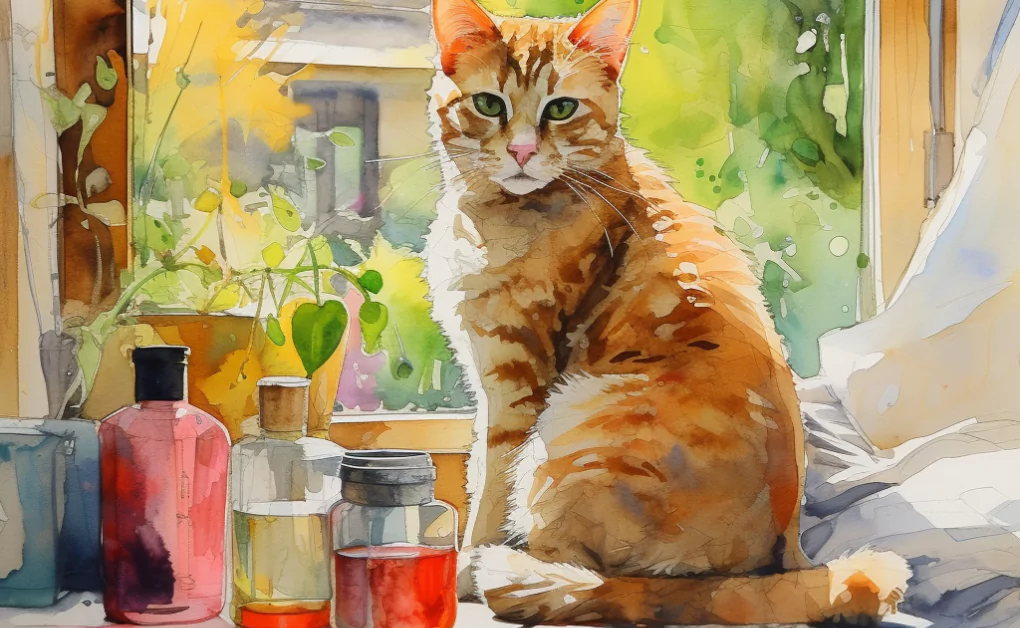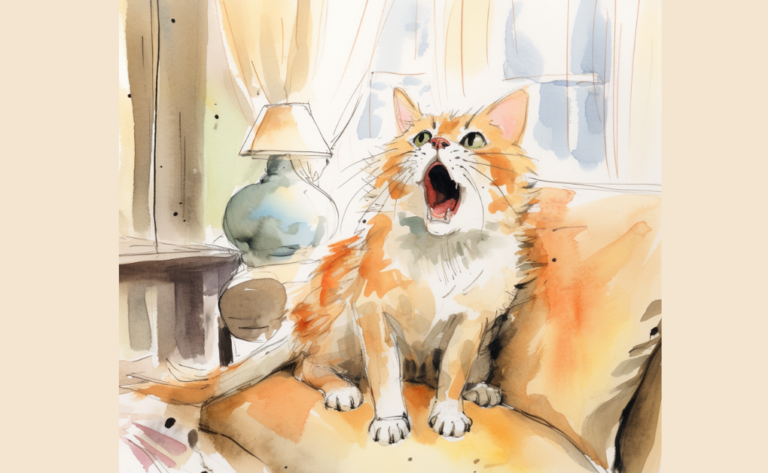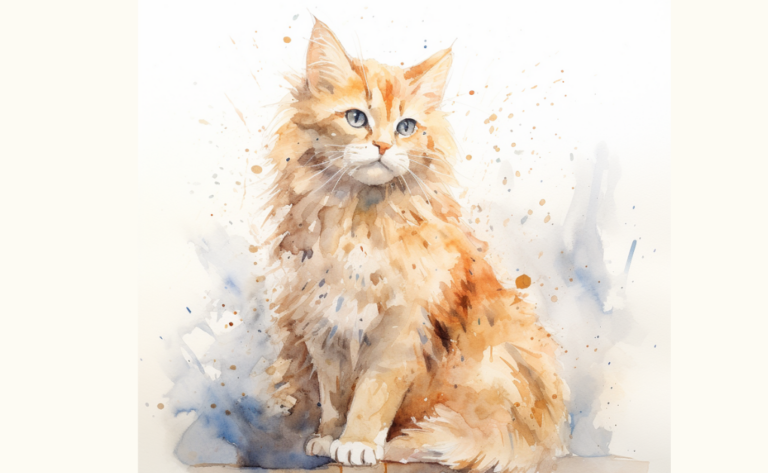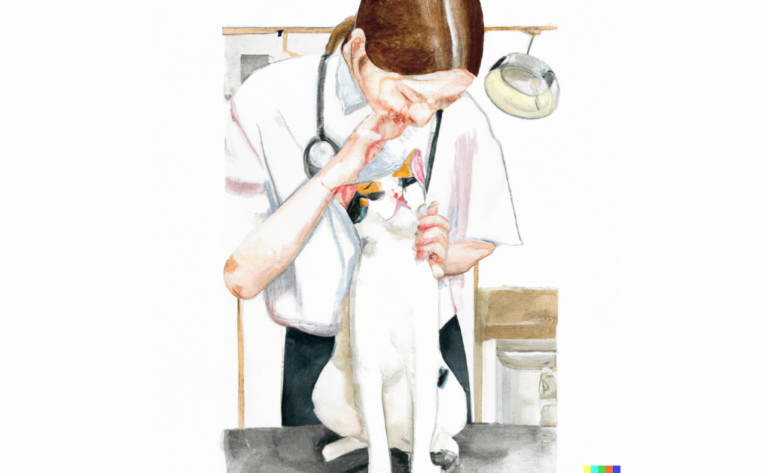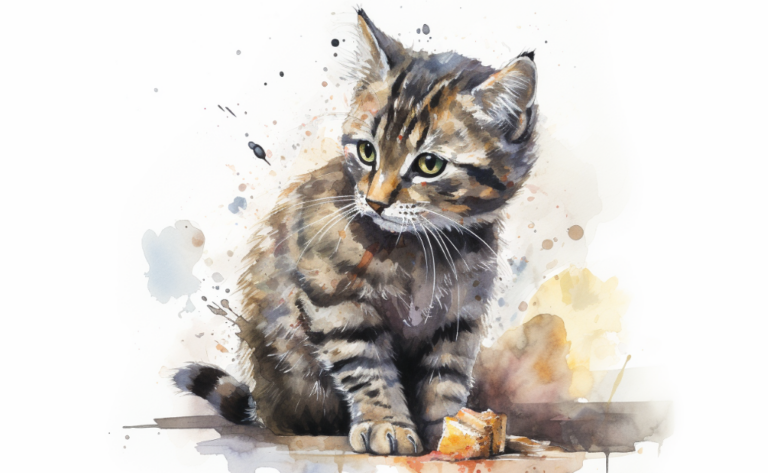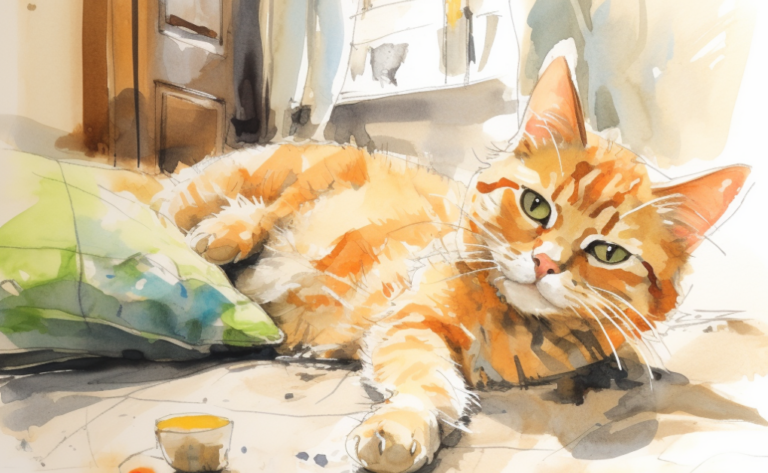What are Common Poisons in Cats
What is it?
How is it Treated?
Breed Predispositions
Any cat can be exposed to toxic substances and may develop symptoms of poisoning. However, some studies have suggested that outdoor cats may be at a higher risk of poisoning due to their exposure to outdoor environments and potential hazards.
Introduction
While preparing dinner, Emily noticed her curious Bengal cat, Simba, chewing on a nearby houseplant. Moments later, Simba began drooling and acting disoriented. Fearing that her beloved pet may have ingested a toxic substance, Emily quickly consulted her veterinarian, who confirmed her worst suspicions: Simba had been poisoned.
Poisoning occurs when cats come into contact with, inhale or ingest any harmful or potentially lethal substance. The specific impact varies depending on the nature of the poison.
Different types of common poisons in cats operate in diverse ways. Some interfere with cellular function within the cat’s body, while others might obstruct crucial metabolic processes. Certain poisons target organs like the kidneys, liver, heart, and nervous system. No matter the type of poison, the consequence is damage to the cat’s body that can result in severe illness or even death.
Cats most commonly encounter poisons through ingestion, though inhalation or dermal (skin) contact can also result in poisoning. Cats’ unique behaviors, physiology, and metabolism make them more susceptible to certain types of poison than other animals. For example, their grooming behavior can inadvertently lead to the ingestion of toxins that land on their fur or paws.
Pet owners must understand that “poison” isn’t always synonymous with inherently toxic substances. Many ordinary household items, foods, and plants—such as the sago palm—that are harmless to humans can be poisonous to cats due to differences in how cats metabolize these substances.
To care for your cats, always keep potentially harmful substances, including rat poison, out of their reach to minimize the risk of accidental poisoning. If you suspect poisoning, immediate attention from a veterinary professional is crucial to enhance the chance of a successful outcome. The sooner a poisoned cat is treated, the better its survival chances. In such cases, services like the animal poison control center or pet poison helpline can provide vital guidance.
Common Poison in Cats
Ingestion of Toxic Substances
Cats might ingest poisons directly by eating poisonous foods, plants, or substances. Some cats might chew on or eat items such as poisonous plants, human food toxic to cats (like chocolate, onions, or alcohol), medications meant for humans or other animals, or rodenticides and insecticides.
- Plants: Many common houseplants and outdoor plants are poisonous to cats, including lilies, azaleas, tulips, and oleander.
- Human Food: Some human foods are toxic to cats, such as onions, garlic, raisins, grapes, alcohol, caffeine, and chocolate.
- Medications: Both over-the-counter and prescription medications intended for humans can be toxic to cats, including acetaminophen (Tylenol), ibuprofen (Advil, Motrin), and many types of antidepressants.
- Pesticides: Rodenticides (rat and mouse poison) and insecticides can be very harmful if ingested by cats.
Skin Contact
Some poisons can be absorbed through the cat’s skin. This can happen if a cat comes into contact with certain toxic plants, chemicals, or topical dog medications. For example, certain types of flea and tick medications for dogs contain permethrin, which is highly toxic to cats.
- Topical Medications: Some topical medications intended for dogs, especially those for flea and tick prevention, can be toxic to cats. The ingredient permethrin, common in many dog-specific products, is especially dangerous.
- Cleaning Products: Certain cleaning products can be toxic to cats if they come into contact with their skin. These include bleach, laundry detergent, and certain types of disinfectants.
- Plants: Some plants can cause skin reactions or systemic toxicity if a cat comes into contact with them. Examples include poison ivy, oak, and the sap of certain plants like Dieffenbachia.
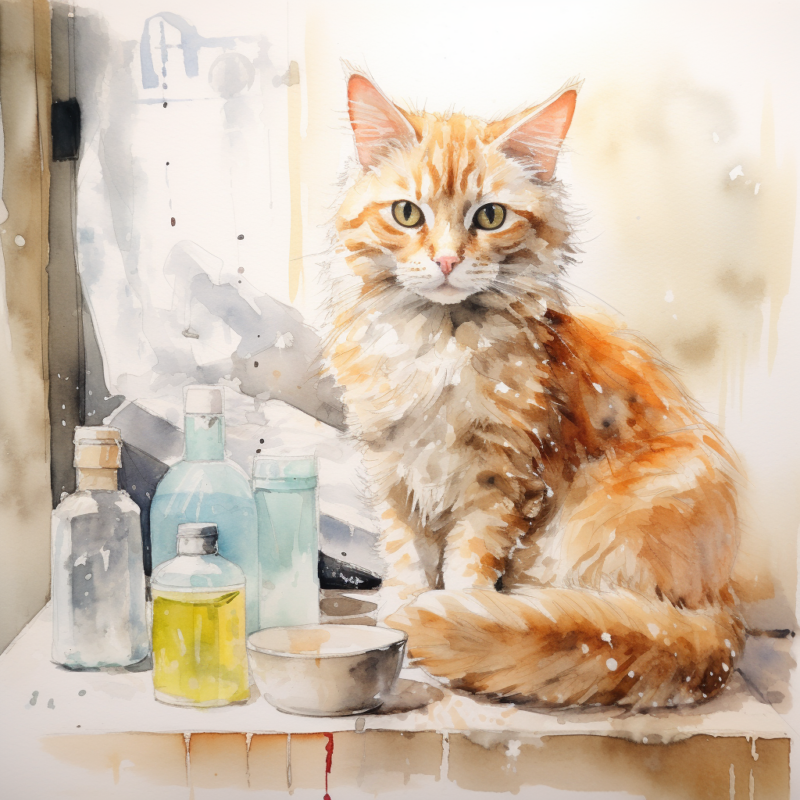
Inhalation
Inhalation of toxic fumes can also cause poisoning in cats. This could occur with certain cleaning products, smoke, or other toxic fumes.
- Household Cleaners: Certain cleaning products, particularly bleach, ammonia, or phenols, can be toxic to cats if inhaled.
- Smoke and Combustion Products: Smoke from cigarettes, fires, or burning materials can contain various toxic substances.
- Pesticide Sprays: Aerosolized forms of pesticides can be inhaled by cats, leading to poisoning.
Secondary Poisoning
This occurs when a cat eats an animal that has consumed poison. For example, a cat could become poisoned by eating a rat that has consumed rat poison.
- Rodenticides: If a cat eats a rodent that has ingested rodenticide, the cat can be poisoned.
Improper Medication Use
Cats can also become poisoned by misuse of medications. This includes giving a cat human medication, administering the wrong dose of a cat medication, or using a dog medication on a cat.
It’s important to remember that cats are more sensitive to many substances than humans or dogs. So, it’s crucial to be cautious with all potential toxins and always consult a vet before administering any medication.
- Human Medications: Many human medications can be toxic to cats, even in small amounts. This includes pain relievers like acetaminophen and ibuprofen, antidepressants, ADHD medications, and topical creams.
- Dog Medications: Some medications intended for dogs, especially certain flea and tick products, can be extremely toxic to cats.
Contacting a veterinarian is crucial if you suspect your cat has encountered these substances.
What are the Symptoms of Poison in Cats?
Signs of poisoning in a cat can fluctuate widely, hinging on the nature of the poison involved, the quantity consumed, and the individual health status of the cat. Nonetheless, some common symptoms might suggest a cat has come in contact with a toxic substance. These encompass:
Gastrointestinal Symptoms
Common symptoms of a poisoned cat in the gastrointestinal realm are among the most frequently observed, including vomiting (or cat vomit), diarrhea, loss of appetite, and excessive drooling or salivation.
Neurological Symptoms
Certain feline toxins can impact a cat’s nervous system, leading to seizures, tremors or shaking, difficulty maintaining balance or walking, and alterations in behavior like restlessness, agitation, or lethargy.
Respiratory Symptoms
Some poisons can induce respiratory distress in cats, appearing as symptoms like coughing, wheezing, shortness of breath, or rapid or laborious breathing.
Cardiovascular Symptoms
Certain toxic substances can affect a cat’s heart and blood vessels, leading to signs such as an irregular or rapid heartbeat, pale gums, cold extremities, weakness, or even collapse.
Urinary Symptoms
Some toxins, particularly those causing severe kidney harm, can trigger urinary symptoms in cats. These might involve changes in urination (either increased or decreased frequency), blood in the urine, or indications of pain or difficulty when urinating.
Dermatological Symptoms
If a cat encounters a skin irritant, it may display dermatological symptoms such as redness, swelling, itching, rashes, or ulcers.
Ocular Symptoms
Exposure to certain toxic substances can lead to eye irritation or damage, yielding symptoms like redness, excessive tearing, squinting, or even blindness.
Remembering that these symptoms might indicate other health problems and not just poisoning is crucial. However, suppose you notice these signs and suspect that common foods or substances might have poisoned your cat or caused toxicity in cats. In that case, seeking veterinary care without delay is of utmost importance. Timeliness is critical when dealing with potential poisoning cases, as quick treatment can significantly boost a cat’s prognosis and is one of the most common causes of poisoning in cats.
What to Do if Your Pet Has Been Poisoned?
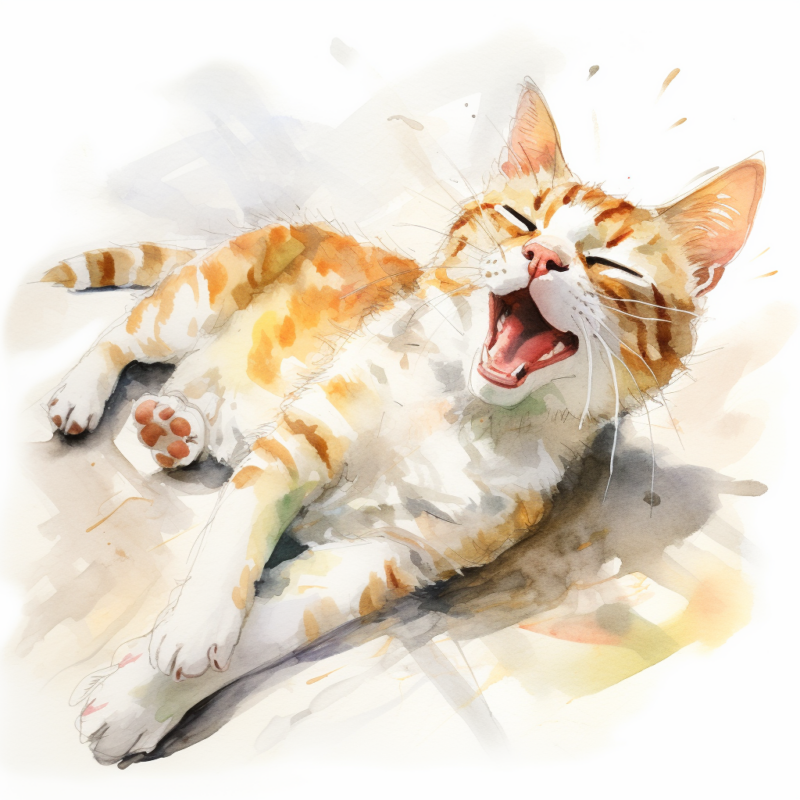
- Remove Your Pet from the Source: If possible, remove your pet from the source of the poison. This could mean moving your pet away from a toxic plant or removing a toxic substance from its mouth. However, ensure you’re not putting yourself at risk of being bitten or ingesting the poison yourself.
- Gather Information: If possible, collect any remaining poison, the container it came in, and any vomit or stool your pet has produced. This could be invaluable information for the vet in determining the best course of action.
- Don’t Induce Vomiting Unless Instructed to Do So: It’s generally not recommended to induce vomiting unless specifically directed by a vet. In some cases, inducing vomiting can cause more harm than good, such as if the poison is corrosive or if the pet is having seizures or is unconscious.
- Call a Veterinarian Immediately: Even if your pet seems fine, seeking professional help immediately is essential if you suspect poisoning. Certain toxins can cause delayed symptoms, so it’s crucial not to wait until your pet appears sick.
- Follow the Vet’s Instructions: Depending on the situation and the type of poison involved, the vet might instruct you to bring your pet to the clinic immediately. Alternatively, they recommend first giving your pet a specific antidote or activated charcoal to absorb the poison.
- Take Your Pet to the Vet: If your vet recommends it, take your pet to the clinic or emergency animal hospital as soon as possible. Bring any information you’ve gathered about the poison and your pet’s symptoms. This will help the vet make a diagnosis and begin treatment promptly.
- Monitor Your Pet: After initial treatment, monitor your pet for any changes in behavior or symptoms. Follow-up vet appointments may be necessary to ensure complete recovery.
Remember, prevention is the best cure. Keep all potentially poisonous substances out of reach of your pets to minimize the risk of accidental poisoning.
How to Diagnose Common Cat Poison?
Identifying cat poisoning is a comprehensive process combining clinical signs, historical background, and specific diagnostic tests. Here’s an in-depth look at how it works:
Clinical Signs and History
The veterinarian’s first step involves examining the cat’s symptoms and obtaining a detailed account from the owner. This may encompass questions concerning what substances the cat could have come in contact with, when symptoms initially appeared, any variations in the cat’s behavior or environment, and whether the cat has vomited or had diarrhea. This information could prove extremely beneficial if the owner witnessed the cat ingest or interact with a specific poisonous substance.
Physical Examination
An exhaustive physical assessment is carried out to evaluate the cat’s overall health and identify particular signs of poisoning. This may involve checking the cat’s heart rate, respiratory rate, and temperature and examining the color of the cat’s gums. The vet might also search for specific signs related to certain types of toxins, such as mouth burns from corrosive substances or dilated pupils in instances of exposure to particular toxins.
Laboratory Tests
Depending on the symptoms and potential poison, the veterinarian may conduct lab tests such as a complete blood count (CBC), biochemistry profile, urinalysis, and coagulation profile. These tests can shed light on the functioning of the cat’s organs and might reveal abnormalities aligned with certain types of poisoning, like a decrease in red blood cells.
Imaging
Imaging studies such as X-rays or ultrasounds may sometimes be performed. These can help the vet spot if any abnormalities in the cat’s internal organs might point to certain types of poisoning.
Specific Poison Tests
In some cases, if a specific poison is suspected, tests may be available to detect that poison in the blood or urine.
Treatment Trial
Sometimes, if a particular type of poisoning is strongly suspected but can’t be definitively diagnosed, the vet may initiate a ‘trial’ treatment. If the cat responds positively to the treatment, this can aid in confirming the diagnosis.
Due to the vast array of potential toxins dangerous to cats and the diverse poisoning symptoms, diagnosing cat poisoning can sometimes pose a challenge. However, with a detailed history, thorough examination, and relevant diagnostic tests, vets can often identify and treat the issue accurately. If you suspect poisoning in your pet, take your cat to the vet promptly for the best chance at maintaining your pet’s health and promoting recovery.
Treatment Options for Poison in Cats
The strategy for treating cat poisoning is primarily dictated by the type of poison the cat has encountered. Nevertheless, veterinarians employ some general treatment methodologies in cases of poisoning:
Decontamination
This principally entails eliminating residual poison from the cat’s system to impede further absorption. In cases where the cat has ingested the poison, the vet might prompt vomiting (if it’s safe and within a certain timeframe post-ingestion), dispense activated charcoal to bind the toxin in the digestive tract, or specific cases, execute a gastric lavage (in stomach pump). If the cat’s skin has been exposed to a toxic substance, the vet will meticulously clean the cat to get rid of the poison.
Antidotes
Certain specific poisons come with antidotes that can counteract the poison’s impact. For instance, vitamin K1 is an antidote for specific forms of rodenticide poisoning, and N-acetylcysteine can be used as an antidote for acetaminophen (Tylenol) poisoning. In cases of exposure to ethylene glycol, which is highly toxic to cats, immediate veterinary care and the use of an antidote can be lifesaving.
Supportive Care
This represents an essential component of the treatment for feline toxicities and can encompass various treatments to aid the cat’s body during the recovery phase. This might include administering IV fluids to aid in maintaining hydration and kidney function, which is crucial in preventing chronic conditions like kidney disease in Persian cats or managing kidney failure in cats. Additionally, medications might be used to manage symptoms like vomiting or seizures, and oxygen therapy might be required if the cat is experiencing difficulty breathing.
Monitoring
It’s important to closely monitor the cat’s vital signs and review blood tests or other diagnostic results regularly. This will guide the treatment approach and help assess the cat’s recovery progress.
Specific Treatments
Dependent on the type of poison, there may be additional specific treatments. For instance, if a cat ingests a foreign object with poison (like a piece of a toxic plant), surgery might be required to remove it. In other cases, a cat may need specific treatment for a chronic condition like inflammatory bowel disease if a toxin worsens this condition.
It’s vital to recognize that all instances of cat poisoning are emergencies. If you suspect your cat has been exposed to a substance that could cause toxicity in cats, it’s essential to seek veterinary help immediately. Early intervention and treatment can considerably enhance the prognosis for a cat suffering from poisoning.
Prevention for Feline Common Poison
Preventing accidental poisoning is an essential part of responsible pet ownership. Here are some strategies cat owners can use to help keep their pets safe:
- Safe Storage of Hazardous Substances: All potentially harmful substances, including cleaning supplies, medications, pesticides, and certain foods, should be stored in secure, cat-proof locations. Cats are adept climbers and jumpers, so even high shelves may be within reach.
- Awareness of Toxic Plants: Many common houseplants and outdoor plants are toxic to cats. Cat owners should research any plants in their home or yard to ensure they’re safe for their pets. If there’s any doubt, it’s best to keep plants out of reach or opt for artificial plants.
- Care with Medications: Both human and pet medications can be toxic to cats if ingested inappropriately. Always store medications securely, and never give your cat any medication without consulting your vet.
- Safe Use of Flea and Tick Products: Some flea and tick products, particularly those intended for dogs, can be highly toxic to cats. Always use these products as directed, and never use a product intended for a dog on a cat.
- Pet-Proofing the Home: Just like baby-proofing, pet-proofing involves making your pet’s environment as safe as possible. This can include securing trash cans, keeping toilet lids closed (to prevent exposure to cleaning chemicals), and keeping small objects that could be choked on or ingested out of reach.
- Education and Vigilance: Stay informed about common household hazards and signs of poisoning in cats. If you suspect your cat has been exposed to a toxic substance, contact your vet or a pet poison helpline immediately.
- Use Safe and Cat-Friendly Products: Choose pet-safe alternatives whenever possible. For example, use cat-safe cleaning products or opt for natural, non-toxic methods for pest control.
- Routine Vet Checkups: Regular vet checkups can help ensure your cat is in good health and provide an opportunity to discuss potential risks and preventive measures.
Remember, even with all these precautions, eliminating the risk of poisoning is impossible. But with vigilance and proper preventative measures, you can significantly reduce the likelihood and ensure a safer environment for your cat.
Frequently Asked Questions
Disclaimer: The information provided on this veterinary website is intended for general educational purposes only and should not be considered as a substitute for professional veterinary advice, diagnosis, or treatment. Always consult a licensed veterinarian for any concerns or questions regarding the health and well-being of your pet. This website does not claim to cover every possible situation or provide exhaustive knowledge on the subjects presented. The owners and contributors of this website are not responsible for any harm or loss that may result from the use or misuse of the information provided herein.

